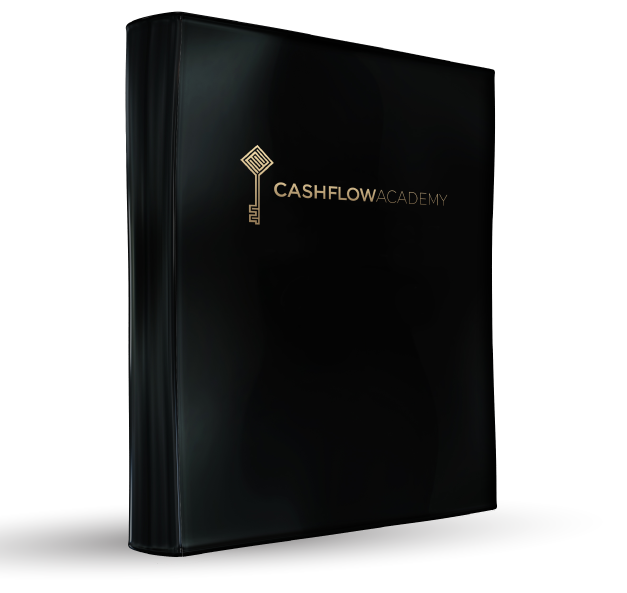This week’s lesson is about foreclosures and I wanted to highlight that a good source for foreclosure leads is Realty Trac because they have a lot of reports and data that you can use.
Realty Trac is actually in the family of companies I’ve mentioned many times before, which is ATTOM Data Solutions, which is a huge, data sourcing company and they use Realty Trac that’s focused on foreclosures and pre-foreclosures. I just wanted to mention that you might want to browse these sites just like you browse a store online. What I love about Realty Trac is that it pulls from all kinds of data, so instead of going to Tranzon or auction.com, Realty Trac just pulls all the information together. This doesn’t mean that everything is in there, but it’s a good source for you and it’s backed by ATTOM Data Solutions.
So just as a reminder and for those that aren’t in the Cash Flow Academy, foreclosures, sometimes called REO (Real Estate Owned) or bank-owned, is a property that has already been through the process of being retaken as an asset by a bank or lending institution. It can be taken back if the borrower doesn’t make their payments for a long period, which will differ depending on where you are.
There are two ways to satisfy the debt or take back the property:
THROUGH JUDICIAL FORECLOSURE
This is when you go through the courts and that’s like a lawsuit with the underlying lien being a mortgage deed. You might’ve heard people say, “Oh, I have a mortgage,” which means you have a mortgage in the sense that you have a debt, but the mortgage deed is only for certain states that are judicial states. For example, here in California, the state is not a judicial state. Instead it’s a statutory state, meaning foreclosure happens through the deed of trust. This leads us to the second way to satisfy a debt or take back the property.
THROUGH THE STATUTORY ROUTE
In a statutory state, the language and the rights are built into the deed of trust, so no courts have to be involved except for the filing of certain forms, which are the notice of default and the notice of sale.
Some states actually have both mortgage deeds and deeds of trust. For example, if the loan is FHA or VA, then once the bank forecloses, they actually get reimbursed for their losses by FHA HUD or by the Department of Veteran Affairs, and then those entities become a bank-owned entity. You might see VA foreclosures on VA websites or auction.com and then HUD has their own foreclosure website, so they actually become like the bank. They become the owner after they reimbursed the lender who lost money on the foreclosure.
Pre-foreclosure, however, is where it gets dicey for us as investors because pre-foreclosure means that the borrower or the homeowner is delinquent, and the lender in charge (e.g. a servicer hired by the bank to collect payments, an attorney if it’s a judicial state) can start the foreclosure process. So in pre-foreclosure, the borrower is delinquent on payments, but hasn’t been foreclosed on yet.
Here in California, we’re a statutory state, so we have the notice of default. This means when someone is 30 days delinquent, the lender can file a notice of default with the county, not the courts, and the borrower has 90 days to catch up on the mortgage payment and any back payments. If they can’t catch up at the end of 90 days, the lender then files a notice of sale, which means the property is going to sale and the lender can take back the property. This period lasts 21 days and lenders can extend that period up to three times. The reason for this additional extension is that lenders don’t want to foreclose, especially if you’re close to paying everything off. Foreclosing is a big hassle and it can get expensive. The lender is now liable for all kinds of stuff because they’re the owner just as if they were the landlord. So pre-foreclosure means that the lender is not yet in possession of the property; the original owner is.
Some people advocate writing letters to those who are delinquent so that they can negotiate with them before it goes back to the lender. This can be tricky because you have to be very careful to research what other liens are on the property. You might do a cash for keys deal, meaning that you catch up the mortgage, give them cash to move, etc., but what if there are other debts that are owed as well? There might be a second mortgage or they were delinquent on taxes. Just make sure you do some research.
Of course some people are successful at doing pre-foreclosures, but there’s just a lot of extra risk in that. Also keep in mind that certain states have very long redemption periods after foreclosure, so even after a bank forecloses, the previous owner of the property can “catch up the mortgage,” even though they lost the property. Just be very careful when you’re buying foreclosures in states that you’re not familiar with. Get familiar with the legalities of things, for sure. Find yourself a strong attorney to advise you if you’re going to do either foreclosures or pre-foreclosure purchases.
Thanks for being a part of the Cash Flow Academy!


